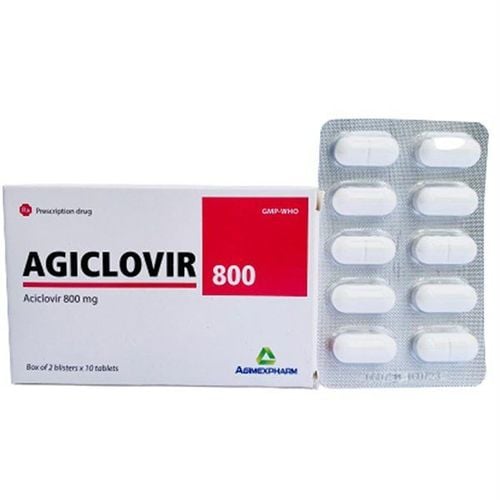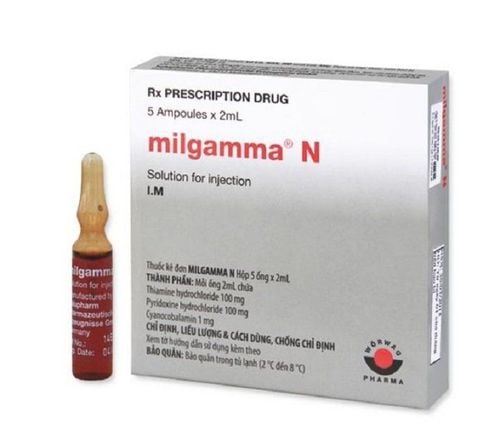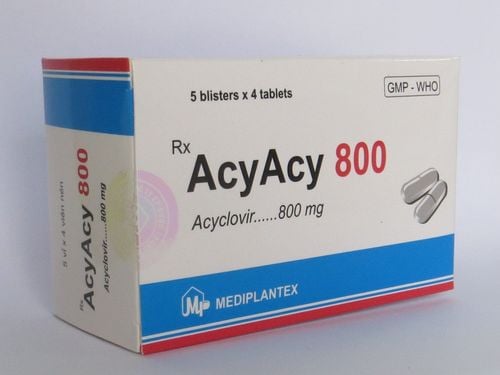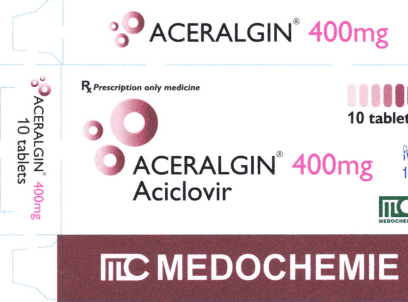This is an automatically translated article.
Aclocivis belongs to the group of anti-parasitic drugs, which are prepared in the form of a cream applied to the skin. The main ingredient of the drug is Acyclovir and other excipients just enough. How the drug works, how to treat it, please refer to the article below.
1. What does Aclocivis do?
Active ingredient acyclovir in nucleoside analogues (acycloguanosin). It has a selective effect on cells infected with the Herpes virus. To be effective, acyclovir must be phosphorylated to the active form, aciclovir triphosphate. In the early stages, thanks to the viral enzyme thymidinekinase, acyclovir is converted to aciclovir monophosphate. Then, thanks to a number of other cellular enzymes, it is converted to aciclovir diphosphate and triphosphate. Aciclovir triphosphate inhibits DNA synthesis and viral replication without affecting normal cellular metabolism.
Acyclovir has the strongest effect on Herpes simplex virus type 1 (HSV - 1) and less powerful against Varicella zoster virus (VZV), Herpes simplex virus type 2 (HSV - 2). Acyclovir is the weakest cytomegalovirus (CMV). In clinical trials, CMV-infected individuals were not affected by acyclovir. There are no specific studies on the anti-Epstein Barr virus effects of acyclovir. Some resistant strains and latent Herpes simplex virus in the lymph nodes are not destroyed with acyclovir.
In the treatment of severe encephalitis caused by HSV-1 virus, acyclovir has good effects, can help reduce the mortality rate from 70% to 20%. Some patients are cured and serious complications are reduced. Acyclovir can also be used to treat milder forms of encephalitis caused by HSV-2.
Oral bioavailability of acyclovir is about 20% (15 - 30%). Absorption of the drug is not affected by food. Acyclovir is widely distributed in body fluids and organs such as mucous membranes, uterus, aqueous humor, vaginal fluids, semen, brain, cerebrospinal fluid, kidneys, muscles, tears, liver, lungs, intestines, leaves spleen. Acyclovir is only 9-33% protein bound.
A large amount (30 - 90% of the dose) is excreted unchanged by the kidneys and a small amount is metabolised in the liver.
Therefore, Aclocivis is indicated in the following cases:
The drug is effective in the prevention and treatment of Herpes simplex encephalitis, Herpes simplex virus type 1 + 2 in the skin and mucous membranes. Used to treat acute Herpes zoster (shingles) infection, shingles eye, Herpes zoster pneumonia in adults. Treatment of genital herpes infection at first or recurrent infection. Indications for use in cases: chickenpox in immunocompromised people, chickenpox in infants, hemorrhagic varicella. On the other hand, the drug is not allowed to be prescribed in case of allergy or hypersensitivity to Acyclovir or other components of the drug.
2. Reference dose of Aclocivis
Treatment with Aclocivis should be started as soon as possible especially at the beginning of the signs and symptoms of the disease.
New cases of infection or recurrence of Herpes simplex of the lips and genitals should be treated as soon as possible. If the infection is oral or vaginal, systemic treatment in oral form may be required. Herpes zoster infection also requires consideration of systemic oral therapy.
Topical dose:
Ointment: Every 4 hours, apply to the affected area, on average 5 to 6 times a day. Use within 5 to 7 days and use as soon as symptoms appear. Eye ointment: Apply 5 times daily, use at least 3 days after the treatment period has ended. If precipitation occurs in the renal tubule when the drug concentration there exceeds the solubility 2.5 mg/ml, or renal failure, high serum creatinine, excitability, tremor, convulsions, restlessness, palpitations Chest, hypertension, difficulty urinating, the patient needs hemodialysis until kidney function is restored, drug is stopped, fluids and electrolytes are given.
3. Interactions of Aclocivis with other drugs
Drowsiness and lethargy may occur with concomitant use of acyclovir and zidovudine. Probenecid competitively inhibits tubular secretion of acyclovir; therefore, it should be increased by 40%, reducing urinary excretion and clearance of acyclovir. The antiviral potency of acyclovir is increased when amphotericin B and ketoconazole are co-administered. The in vitro antiviral activity of acyclovir is enhanced when co-administered with interferon.
4. Undesirable effects when using Aclocivis
May cause a burning or stinging sensation at the application site and a mild erythema associated with dryness. With eye ointment, the phenomenon of mild stinging immediately upon application will take place less. May appear blepharitis, punctate keratitis, conjunctivitis . However, these cases will go away on their own without leaving any sequelae, so there is no need to stop taking the drug.
5. Precautions when using Aclocivis
A doctor's prescription for Aclocivis is required when used in case of pregnancy or lactation. Note: Do not apply in mouth, eyes or vaginal mucosa. Use strictly according to the recommended dose, do not prolong the treatment time.













